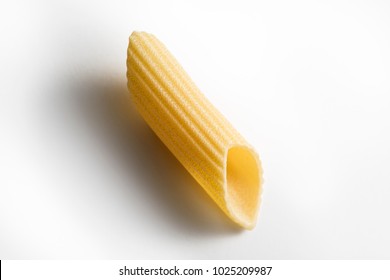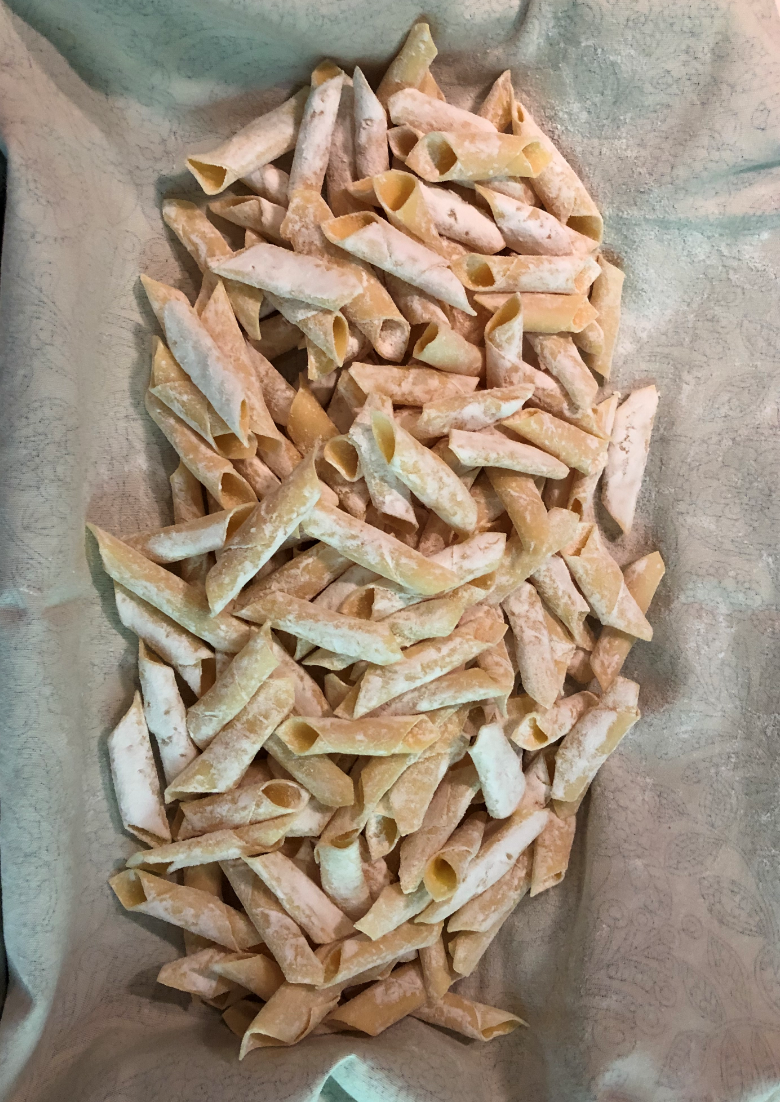A couple of weeks ago, we were lucky enough to get a bunch (40kg) of ripe roma tomatoes, and thus on a very short notice we called a couple of friends for help and we did, what we have not done for years ... we had our Tomato Passata making day!
40 bottles later, we have now enough sauce to last us for a little while... and to test it out I had to make a batch of fresh pasta!
I have made home made pasta before, such as Ravioli, Tortellini, Tagliatelle, Parpardelle and much more, however I had never made Penne.
So,
Step 1 - was to look up how to shape a Penne Pasta

Home made they must look a bit different, in order to achieve this tubular shape, so good old YouTube, was giving me plenty of assistance and showing me how to make them!
Click here if you are curious.
Step 2 - look up the pasta dough recipe (an now you can learn from my mistake!)
click on below read more to find out how to go about this!
I Skipped further investigation as I thought I knew how to make pasta dough... and I shouldn't have!
here is why:
with a normal pasta dough you mix 100g of 00-Flour with 1 Egg / per person.
this works perfectly if you make pasta that does not need to hold it's shape or has a filling to stabelise the shape, such as ravioli, or tagliatelle or similar, HOWEVER, using this very dough to make the penne works great until the moment that the pasta hit's the water!
 The pasta will go floppy and will not hold it's beautiful tubular shape - so the recipe to use for Penne needs to be slightly different, and here comes my lesson learnt: Almost all dried pasta comes from durum semolina, a coarsely ground hard wheat flour with a high gluten content. Semolina's gluten gives it the sturdiness it needs to hold up to thick sauces without losing the delicacy needed to bend and twist into complex pasta shapes. The best way is to make the pasta a day ahead of time, to give it some time to dry.
The pasta will go floppy and will not hold it's beautiful tubular shape - so the recipe to use for Penne needs to be slightly different, and here comes my lesson learnt: Almost all dried pasta comes from durum semolina, a coarsely ground hard wheat flour with a high gluten content. Semolina's gluten gives it the sturdiness it needs to hold up to thick sauces without losing the delicacy needed to bend and twist into complex pasta shapes. The best way is to make the pasta a day ahead of time, to give it some time to dry.Ingredients:
per person:
100g SEMOLINA Flour
1 Egg
a pinch of salt
Method
- Make a mound with the flour and make a large well in it (big enough for the eggs). Break the eggs into this well. Add a pinch of salt if you wish.
- Work the eggs and the flour together with a fork, adding the flour from just around the eggs little by little, until you have a smooth dough, adding just a drop of water if necessary, and no more. You can add a small amount of flour if the mixture is too sticky.
- As soon as you can (when the mixture is no longer sticky), use your hands.
- Knead the dough for ten to fifteen minutes, until it is smooth, firm, and quite elastic. Don’t skimp on the kneading or the dough will tear while you’re rolling it out.
- Wrap the dough in plastic wrap and rest it in the fridge for at least 30min.
- now it's time to bring out your pasta machine, I still work with the old type manual machine, as it gives me the most amount of control.
- roll the dough in portions, until thickness 6, and cut the sheets into 2.5cm square pieces.
- you need a small tube to roll the pasta shapes into penne, for the easiest way simply watch the video.
Best Sauce to go with Penne:
Penne Arrabiata is a well known dish, where you cook the passata with some garlic, a little onion, finely chopped, CHILLI (for the arrabiata bit) to your liking and basil, the best herb there is to go with Tomatos! Cook the sauce until it has thickened. Season at the end with Salt.
The penne making needs a bit of patience, even I said at the half way mark, I should have made the tagliatelle, that would have been much quicker! 
Regardless of the collapsed pasta, the flavour was great, and we still enjoyed our meal!
